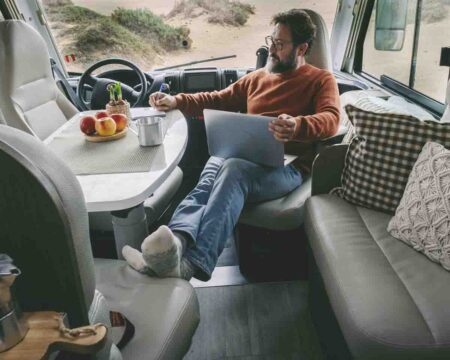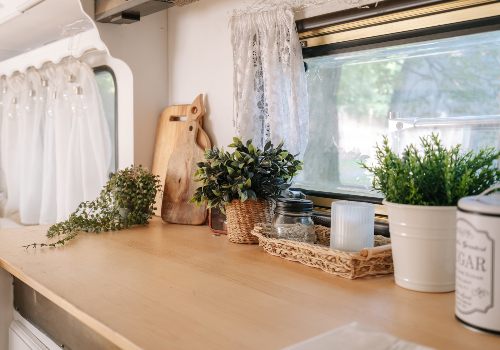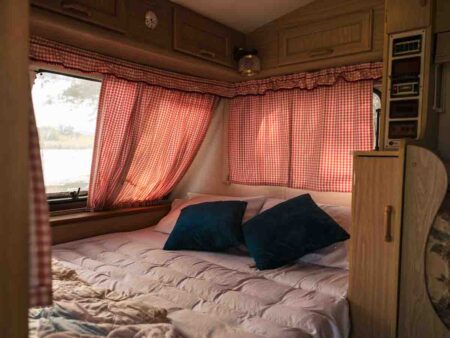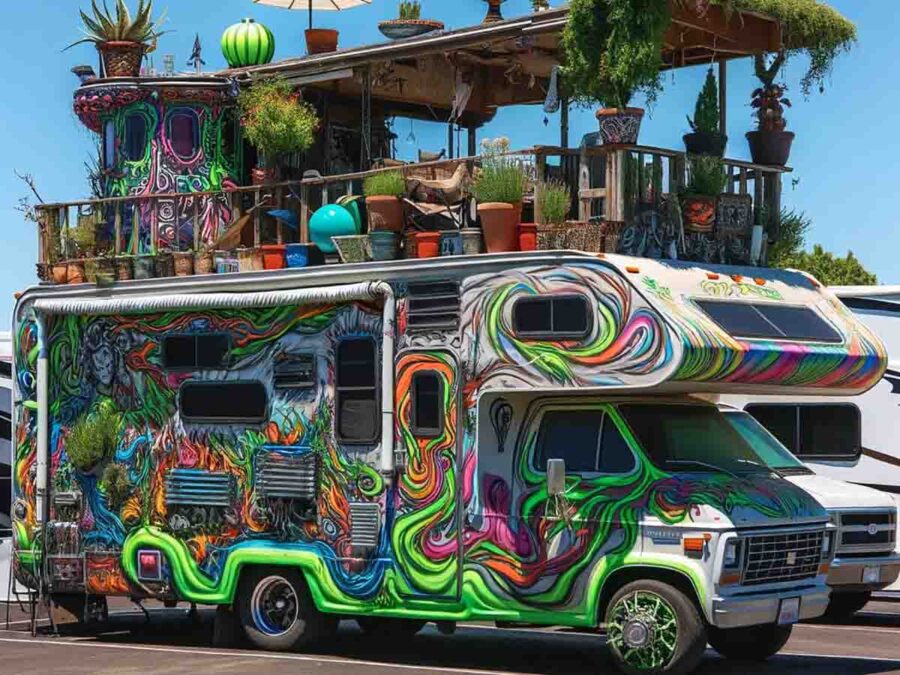Buying and selling recreational vehicles (RVs) can be as complex as the vehicles themselves. With a rich history and evolving market trends, RVs have long been a symbol of freedom and adventure. However, owners face a common dilemma: will renovations increase an RV’s resale value?
This question is particularly pressing given the swift depreciation RVs undergo after purchase. This article attempts to balance enhancing an RV’s appeal through renovations with the risk of over-investment, which might not translate into a higher resale price.
Understanding Resale Value and Depreciation
When it comes to RVs, depreciation is an inescapable reality, particularly for new models. Statistics reveal that a new RV can lose 15-30% of its value within the first year alone. This steep depreciation curve means owners are unlikely to recoup their initial investment, let alone make a profit upon resale.
However, the market for vintage campers and secondhand RVs presents a different scenario. While these older models may require significant investment to become market-ready, they offer a unique appeal that can sometimes mitigate the heavy hand of depreciation.
To counteract this depreciation, owners should consider adopting strategic approaches. The key lies in understanding the market’s demands and making targeted renovations that add real value without overcapitalizing.
Renovating an RV is not just about making it more attractive; it’s about understanding what potential buyers are looking for and adapting the vehicle to meet these expectations while keeping an eye on the bottom line. In the following sections, we will explore the types of renovations that are likely to pay off and those that might prove to be financial pitfalls.
My RV Remodel on a Budget — Before and After (Video)
Pre-Renovation Considerations
Before embarking on any renovation journey, assessing the RV’s current condition is important. This initial evaluation not only determines the extent of required renovations but also helps in deciding whether maintenance or renovation would yield a better return on investment.
For instance, a well-maintained RV might only need minor aesthetic touches rather than a complete overhaul.
Understanding the potential impact of renovations on sales channels is equally important.
While dealerships might be apprehensive about accepting heavily modified RVs, private buyers could be more intrigued by unique, personalized renovations. However, this doesn’t guarantee a higher resale value.
Legal and regulatory considerations also come into play, as certain modifications might not comply with safety standards or could void existing warranties.
Therefore, an RV owner must weigh the potential benefits of renovation against these practical constraints.
6 High-Risk RV Renovations to Avoid

The following list will help you to recognize RV changes that could be detrimental to your vehicle’s resale value:
1. Structural and Mechanical Changes
Making significant alterations to the RV’s structural integrity or mechanical systems is often a risky endeavor.
These changes can include modifying the frame, altering the layout of interior walls, or making major adjustments to the vehicle’s electrical, plumbing, or HVAC systems.
- Risks of Damage: Without professional expertise, such renovations can easily lead to unintentional damage. For instance, altering the structure may weaken the RV’s frame, leading to long-term issues.
- Voiding Warranties: Many RVs come with manufacturer warranties that cover various structural and mechanical aspects. Unauthorized modifications can void these warranties, leaving owners without protection against potential defects or malfunctions.
- Safety Concerns: Structural and mechanical changes can also raise safety concerns. Alterations may not meet safety standards, potentially making the RV unsafe for travel or habitation.
- Resale Value Impact: From a resale perspective, potential buyers might be skeptical about the quality and durability of these DIY modifications. They may prefer an RV that maintains its original factory specifications, ensuring that it adheres to known safety standards and structural integrity.
- Cost and Complexity: Such renovations are often more expensive and complex than cosmetic upgrades. They require a deep understanding of RV engineering and may necessitate hiring professionals, which adds to the cost.
- Legal and Compliance Issues: Depending on the jurisdiction, making structural or mechanical changes might require compliance with certain codes or regulations. Failing to adhere to these can lead to legal complications, especially if the modifications are not professionally certified.
2. Major Floor Plan Alterations
Dramatically altering the RV’s interior layout can be a double-edged sword. While customization might suit personal needs, it could alienate potential buyers who prefer the original layout or find the changes impractical.
3. High-Tech Gadgets and Upgrades
Installing the latest technology, such as advanced entertainment systems or automated features, might seem appealing but often doesn’t lead to a significant increase in resale value. These gadgets can be expensive, and not all buyers are willing to pay extra for them.
4. Personalized Decorations

Customizing your RV with unique and personalized decorations can be a delightful way to reflect your style and make the space feel like home. However, when it comes to resale, these individualistic choices can be a drawback.
Personalized decorations typically include bold paint colors, unique wallpaper, custom art installations, or distinctive fixtures and fittings that strongly reflect personal taste.
- Limited Buyer Appeal: While these decorations might hold special meaning or aesthetic appeal to the owner, they might not resonate with the broader market. Potential buyers often prefer a neutral palette and design that they can envision themselves in, making it easier for them to personalize the space according to their tastes.
- Cost of Reversion: If the RV is heavily personalized, new buyers might calculate the cost and effort required to undo these changes, which can detract from the RV’s appeal. This might lead to lower offers or a smaller pool of interested buyers.
- Perceived Maintenance Issues: Some personalized decorations, especially if they involve complex installations or unconventional materials, might raise concerns about maintenance and durability. Buyers might worry about the longevity of these custom features and the potential difficulty in repairing or replacing them.
- Overwhelming Styles: Bold and specific themes or styles can overwhelm potential buyers. For instance, an RV interior designed with an intense theme (like a tropical jungle or retro 50s diner) might be fun for some but off-putting for others.
- Resale Time: RVs with highly personalized decorations might take longer to sell. The seller may need to wait for a buyer who appreciates the specific style or is willing to invest in changing it.
5. Heavy Furniture and Appliances
Adding weighty items can affect the RV’s balance and reduce its cargo-carrying capacity. This not only poses a potential risk to the vehicle’s structure but also might not appeal to buyers who prioritize efficiency and space.
6. Focusing on Aesthetics Over Functionality
An RV should be a blend of style and substance. Renovations that prioritize looks over practicality can result in wasted space or reduced functionality, which might not appeal to the practical needs of most RV enthusiasts.
These risks highlight the need for careful planning and consideration before undertaking any RV renovations, especially if the end goal is to enhance its resale value.
Add Value With These 6 RV Renovations and Upgrades

Want to Connect With a Community of Over 1,078 RV Enthusiasts?
While certain renovations can be risky, there are upgrades that typically add value to an RV and can make it more appealing to potential buyers. Focusing on functionality, modern conveniences, and eco-friendly features can often yield a better return on investment:
1. Implement Eco-Friendly Upgrades
In a world increasingly conscious of environmental impact, eco-friendly features are a significant selling point. Installing solar panels, energy-efficient lighting, and water-saving fixtures not only appeals to environmentally-minded buyers but also enhances the RV’s self-sufficiency.
2. Upgraded Appliances
While completely overhauling the appliance suite may not be cost-effective, replacing outdated or malfunctioning appliances can be beneficial. Choose modern, energy-efficient models that improve functionality without excessively adding to the RV’s weight.
3. Additional Outlets and USB Ports
As more people travel with various devices, the need for additional charging options has grown. Adding extra outlets and USB ports can make the RV more attractive to tech-savvy travelers who value connectivity and convenience.
4. Dinette Replacements
Many RV owners find traditional dinettes underused or cumbersome. Replacing them with more versatile dining solutions, like a removable table and chairs, can free up space and add to the RV’s appeal, especially if it increases overall functionality.
5. Better Mattresses
Comfort is key in RV travel. Upgrading the standard, often uncomfortable, RV mattresses to higher-quality options can significantly improve the appeal of your vehicle. A good night’s sleep is a selling point that many travelers will appreciate.
6. Maximizing Hidden Storage
Creative storage solutions are always in demand. Adding pull-out shelves in the kitchen, drawers under beds, or additional cabinets can significantly enhance the practicality of the RV. Efficient storage solutions make life on the road easier and more organized, which is a significant selling point.
Each of these upgrades should be considered with a cost-benefit analysis in mind. The goal is to make improvements that are likely to increase the RV’s appeal and functionality to a wide range of potential buyers without overspending on renovations that won’t offer a substantial return on investment. Consulting with RV industry experts or experienced owners can provide additional insights into which renovations are most likely to add value.
20 Easy DIY RV Mods and Upgrades (Video)
Conclusion
Caution is advised against risky RV renovations like major structural modifications, personalized decor, and heavy additions, which can negatively impact resale value.
Alternatively, beneficial upgrades like eco-friendly enhancements, comfortable mattresses, modern appliances, additional outlets and USB ports, practical dinette replacements, and increased hidden storage are recommended. These improvements appeal to a wider range of buyers and enhance functionality without overspending.
"Man cannot discover new oceans unless he has the courage to lose sight of the shore."
-- Andre Gide











